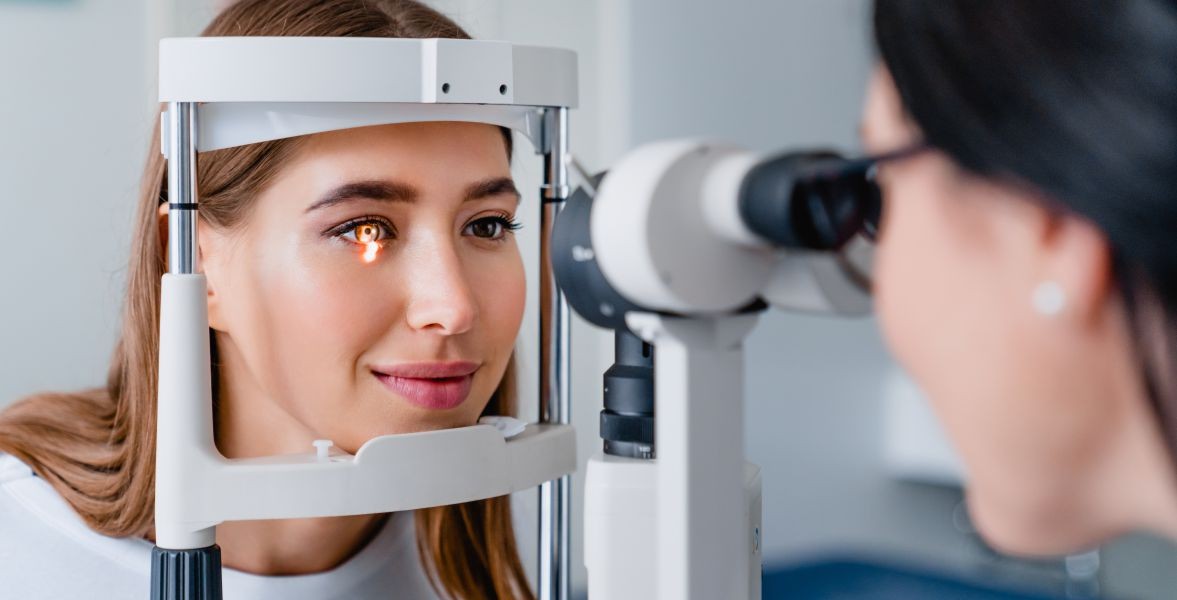Published - Mon, 08 Aug 2022

HOW TO EXAMINE EYE PROBLEMS
1. Evaluation of visual acuity is analogous to the evaluation of a patient’s vital signs during a general physical examination.
a) Snellen eye chart: The patient is asked to read the chart from a distance of 20 feet.
b) Finger test: The examiner should hold up his or her hand three feet away from the patient if the patient is unable to see the chart, and the patient should be asked to count the fingers.
c) Motion and light perception
— Motion: The examiner should wave his or her hand in front of the patient and inquire if they can "see hand motion" if the patient is unable to count fingers at a distance of three feet.
— Light: The patient should also be asked if he or she can perceive light.
— Peripheral vision: The patient’s peripheral vision should be checked and documented.
2. Inspection of the soft tissues
a) The brows, eyelashes, and eyelids are evaluated for swelling, redness, discharge, or abnormal appearance.
b) The conjunctivae are inspected for redness, infection, papillae, follicles, or discharge.
3. Inspection of the pupils
a) Appearance: The size and shape of the pupils should be evaluated.
b) Reaction to light: Both direct and consensual constriction should be evaluated.
c) Accommodation: The patient is asked to watch the examiner’s finger as the examiner brings his or her finger toward the patient’s nose. The patient’s eyes should converge, and the pupils should constrict.
4. Evaluation of extraocular motion: The six eye movements are controlled by three cranial nerves and six muscles.
EYE MOVEMENTS
| Movement | Responsible Muscle | Innervation |
| Adduction | —Medial rectus —Inferior rectus | —Cranial nerve III —Cranial nerve III |
| Adduction | — Lateral rectus — Superior oblique | —Cranial nerve VI —Cranial nerve III —Cranial nerve III —Cranial nerve IV |
| Elevation | —Superior rectus —Inferior oblique | —Cranial nerve III —Cranial nerve III |
| Depression | —Inferior rectus —Superior oblique | —Cranial nerve III —Cranial nerve IV |
| Intorsion | —Superior oblique —Superior rectus | —Cranial nerve IV —Cranial nerve III |
| Extorsion | —Inferior oblique —Inferior rectus | —Cranial nerve III —Cranial nerve III |
5. Inspection of the cornea: The cornea should be inspected for clarity and smoothness. If injury to the cornea is suspected, a fluorescein stain should be placed in the eye and then the cornea should be examined for abrasions using a slit lamp under cobalt blue light.
6. Inspection of the iris: The iris should be examined for any irregularity.
7. Examination of the fundus is performed with an ophthalmoscope and is best accomplished after instilling a mydriatic (e.g., tropicamide 0.5%) to dilate the pupil.
a) The optic disc is inspected for cupping, inflammation, and edema.
b) The retina is inspected for abnormalities (e.g., hemorrhages, exudates, cotton wool spots).
c) The arteries and veins are inspected for arteriovenous nicking, copper wiring, and engorgement or paucity of blood.
8. Evaluation of intraocular pressure: A tonometer should be used to record the pressures in both eyes.
Created by
Comments (0)
Search
Popular categories
Latest blogs

All you need to know about Syphilis
Tue, 15 Nov 2022

What is Pemphigus Vulgaris?
Tue, 15 Nov 2022

Know about Scorpion Stings
Sat, 12 Nov 2022

Write a public review